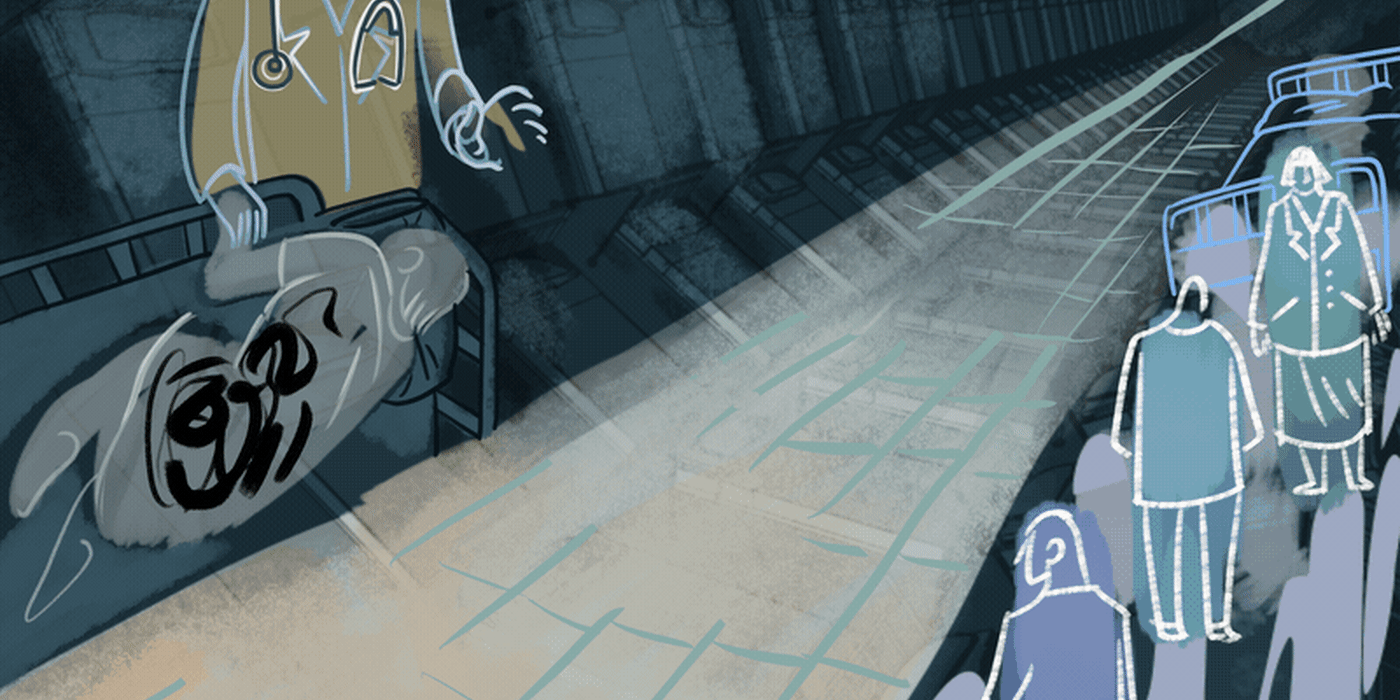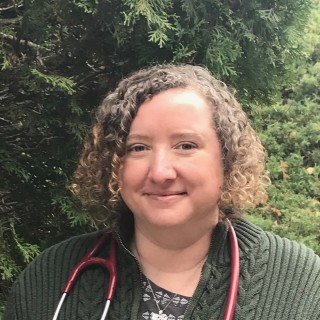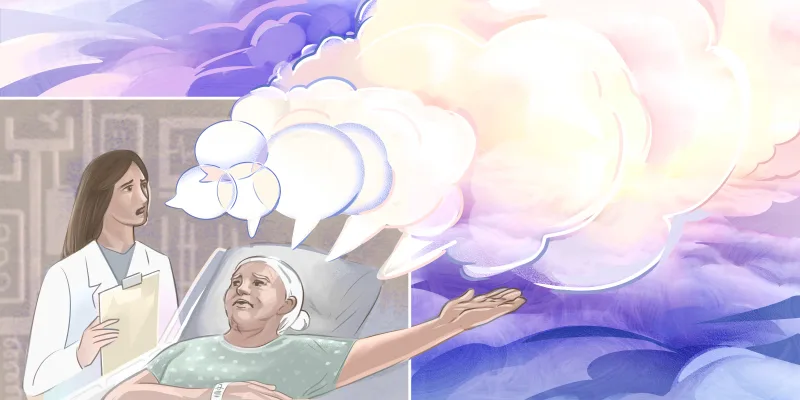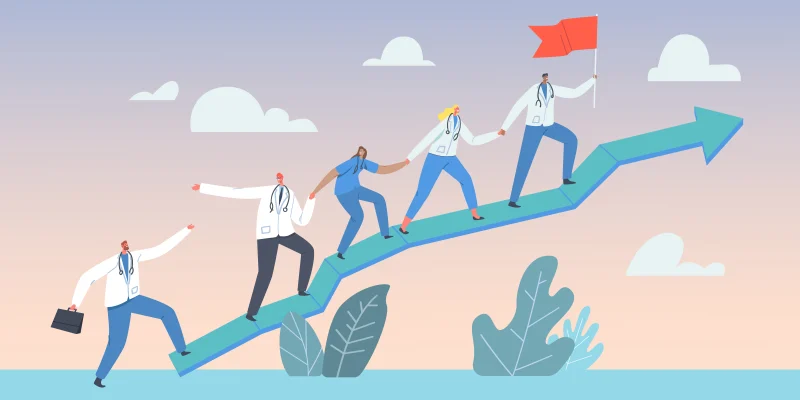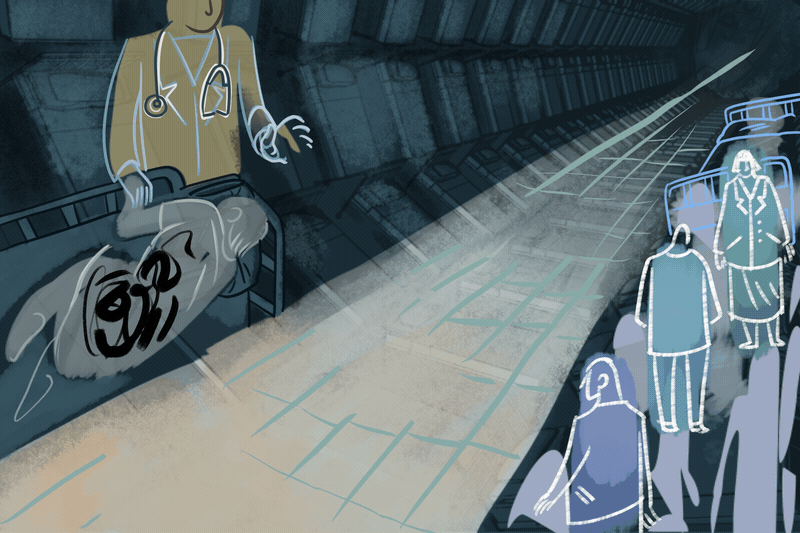
I can hardly remember a time in my life without pain. It started in childhood with severe headaches and stomachaches and I missed a lot of school. As a resident, I struggled to run to codes due to tachycardia and exercise intolerance. I’d huff and puff and feel like my chest would explode and I could barely make it to the code. Also in residency, I developed severe foot pain and my headaches were diagnosed as occipital neuralgia. Later, I developed overall body aches. I saw primary care doctors, rheumatologists, and neurologists. Three years ago, I developed severe right flank pain. It was incapacitating and nearly brought me to the floor. I saw more neurologists, an osteopathic physician, and then a pain physician. Like many patients with chronic pain who have normal labs and imaging, I was dismissed by many. My pain was left unexplained and untreated. After four terrible weeks, I saw a pain physician who diagnosed me with zoster sine herpete which later transitioned to post-herpetic neuralgia.
Over the past three years my overall pain, foot pain, and neuralgias worsened. I tried numerous treatments including pharmacological and interventional approaches, as well as physical therapy, TENS, and pain psychology. I also tried acupuncture and osteopathic interventions. My search for relief was exhaustive. I have had more injections than I can count. The pain from having 20 injections into your post-herpetic neuralgia is second to none. I was frustrated as nothing worked on a sustained basis.
I have learned a great deal over the course of this illness but the most impactful lesson has been one of acceptance. Initially, with each treatment, I had high hopes for a recovery. In the days or weeks after the intervention, I would see each incremental improvement as a sign of success. Some treatments worked well at first then stopped working. For example, the first epidural worked, but the second nowhere near as well. The first nerve ablation helped a great deal but the pain returned and the second one did not help much at all. Some medications initially made a big difference and I thought my pain journey was over — and then the pain returned. No matter what I tried, the pain returned.
The cycle of hope and hopes ruined went on, again and again. The let down became harder and harder to cope with. Finally, after another failed treatment I just accepted that the pain was lifelong. It might go up and down but it was here to stay. I had a week of grief and then moved on. I still pursue new treatments but now I don’t expect much. If they help, great. It may or may not last. If they don’t help, at least I tried. This acceptance in the long-term is easier for me to accept than to have hopes raised and ruined.
I knew there had to be a reason a young person would have such a propensity to develop three neuralgias — occipital, trigeminal, and post-herpetic. My husband’s physician pointed me in the direction of an autonomic neurologist from Mass General Hospital who was doing biopsies for perplexing illness. I found a YouTube video of him speaking to the chronic fatigue society and a light bulb went on. Every slide described my symptoms to a T. Finding him led me to Dr. Oaklander and her YouTube video on small fiber polyneuropathy. This seemed to be the answer. I consulted these neurologists and had a skin biopsy which showed near-total loss of small fibers causing sensory and autonomic neuropathy. I had small-fiber polyneuropathy. Finally, after all these years, I had a reason for my pain. I was not thrilled to have a serious illness but I had a validation of a real overarching reason for my multiple pain diagnoses.
I had never heard of small-fibers in medical school let alone small fiber neuropathy. There is no UpToDate entry on it. The videos cited above lead me to dig deeper into the medical literature. Small fibers are the smallest of nerve fibers and innervate the skin and relay pain messages as well as carry autonomic signals from the ganglion to organs and tissues. Oddly, when they are destroyed they produce a combination of numbness and severe pain. People can have stocking-and-glove pain, widespread muscle pain, or autonomic dysfunction or all three like I do. It is hypothesized that the widespread muscle pain is because the autonomic fibers surround vessels to the muscles and when absent, the small vessels do not dilate properly to increase blood flow with activity. This leads to muscle hypoxia and a build-up of waste products that cause pain. Autonomic dysfunction is reflected in the absence of or increased sweating, tachycardia (often orthostatic as in postural orthostatic tachycardia syndrome), orthostatic hypotension/hypertension, gastroparesis, diarrhea/constipation, overactive/neurogenic bladder or bowel, and blurred vision. There are numerous causes of small-fiber polyneuropathy including diabetes and Sjogren’s but many cases are thought to be autoimmune in nature. Certain autoantibodies have been implicated however testing is not usually available clinically. Severe idiopathic cases are presumed to be autoimmune and are treated by small-fiber experts with IVIG.
I have learned a great deal about medicine being a professional patient as well as a professional physician. In my life as a patient, I have learned to be organized about how I seek care, to be a tireless advocate for myself, to be adaptable, to push on despite challenges and also to accept new limits, and to be creative about getting tasks done when facing physical limitations. I research, crowdsource online, and follow Twitter. All have led to discoveries that were major advances in my care. I have a greater appreciation for mindfulness, other mind-body, and psychological treatments. I value a team approach to health care. I practice gratitude for the good in my life and what I am still able to do. As a physician, I have the approach of investigating all avenues before telling a patient they have a psychosomatic illness. I collect and analyze carefully all the clues in their presentation. I have great empathy for suffering. I practice medicine mindfully and clear my mind before entering a room and see patients with no preconceived notions. I strive to never mock or complain about patients. And I write about my experience to educate other physicians. Overall pain has taken a great deal from me but also given me opportunities. It is the path I am on and I accept it and move forward. As my pain psychologist says, “OK, it stinks, but now what are you going to do?” So, I keep on doing.
Heather Finlay-Morreale, MD, is a board-certified primary care pediatrician working for Nashaway Pediatrics, a practice run by UMass Memorial in Sterling, Massachusetts. Her interests include mental health, mindfulness, and general well-being.
Illustration/GIF by April Brust
